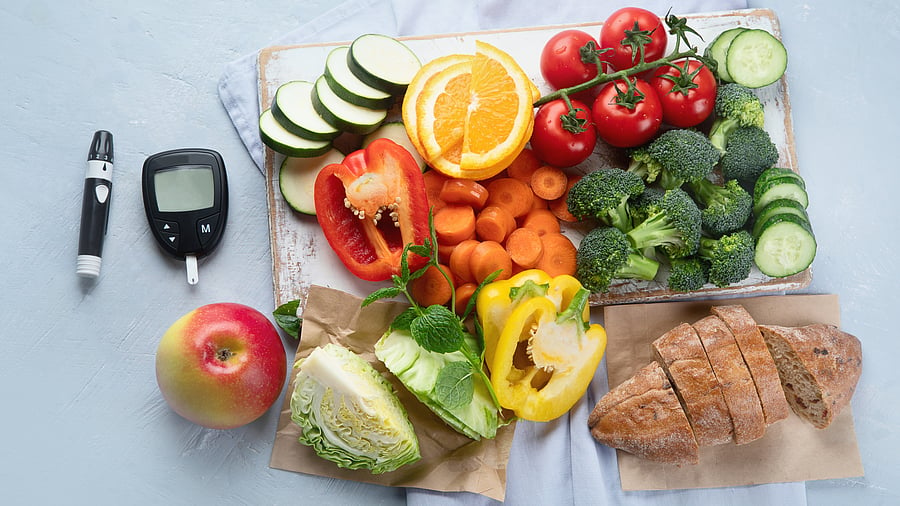
Cracking the diabetes code.
Diabetes mellitus has emerged as one of the defining health challenges of the 21st century. According to the International Diabetes Federation 2024, India is home to over 80 million people with diabetes representing nearly 17 per cent of the global burden making India the ‘diabetes capital of the world’.
Diabetes is a chronic metabolic disorder marked by persistently high blood glucose levels. The two major forms, type 1 and type 2 diabetes, differ in cause but share the same outcome: impaired insulin function.
Type 1 diabetes occurs when the immune system destroys insulin-producing cells in the pancreas.
Type 2 diabetes which accounts for nearly 90-95 per cent of all cases begins with insulin resistance when the body’s cells don’t respond properly to insulin.
Over time, this leads to elevated blood sugar levels. Insulin resistance often develops years before diabetes is diagnosed and is strongly linked to excess visceral fat, poor sleep, chronic stress and diets high in refined carbohydrates.
Early signs
Type 2 diabetes develops silently over years. Being overweight, especially around the abdomen, dark velvety patches on the neck or armpits, slow wound healing, frequent urination and increased thirst may indicate higher risk.
Individuals above 35 years, those with a family history of diabetes, low physical activity, non-alcoholic fatty liver disease or a history of gestational diabetes should consult healthcare professionals for screening.
Diabetes is more than just high sugar
The impact of diabetes is far more than elevated blood sugar. Cardiovascular disease remains the leading cause of death among those with diabetes. Many develop kidney failure, nerve damage or vision loss. The disease is also a leading cause of lower limb amputations and end-stage renal disease requiring dialysis or transplant.
GI and dietary habits
Dietary habits are important modifiable risk factors for type 2 diabetes mellitus.
A growing body of research supports low-glycemic index (GI) eating patterns which emphasize slowly digestible carbohydrates to reduce blood sugar spikes and improve insulin sensitivity.
The glycemic index (GI) is a scale that ranks a carbohydrate-containing food or drink by how fast it raises blood sugar levels after a set amount is eaten. Foods with a high GI tend to increase blood sugar faster than foods with a low GI. Even low GI foods can raise blood sugar if consumed in large portions – portion control still matters.
New insights beyond glycemic index
• Resistant starch found in legumes, green banana, potatoes and rice that are cooked and cooled resist digestion in the small intestine and ferments in the colon forming beneficial short-chain fatty acids. Studies show it improves insulin sensitivity and reduces post-meal glucose.
• Emerging research including recent Indian studies from AIIMS has shown that optimal vitamin D levels may improve insulin sensitivity and help manage blood glucose.
• Dietary AGEs (advanced glycation end product) are compounds formed in foods during deep-frying; broiling, roasting, baking, and grilling can promote inflammation and oxidative stress, worsening insulin resistance.
• Foods highest in AGEs include meat (especially red meat), fried egg, margarine, mayonnaise. Fried foods and highly processed products contain high levels. A low-AGE diet that emphasises steaming, boiling and minimal frying has shown improved insulin sensitivity in overweight Asian Indian adults.
Don’t press the panic button
Prediabetes and type 2 diabetes isn’t a reason to panic; it’s a reason to act. Balanced nutrition, portion control, regular physical activity, adequate sleep and stress management form the foundation of diabetes prevention and care.
Avoid quick fixes or miracle foods. Adopt a diet that aligns with regional and cultural preferences. Ultimately, moderation and long-term sustainability are crucial for the effective prevention and management of diabetes.
Glycemic index
Low GI (55 or less): whole moong, rajma, chana, brown rice, guava, orange
Medium GI (56 to 69): sweet potato, poha, papaya, beetroot, semolina, red rice
High GI (70 or more): white rice, maida based items, potato, sago, corn flakes, rice flakes
Glycated haemoglobin (HbA1c) test
Glycated haemoglobin test, also known as HbA1c test, is useful in early identification of diabetes. The test results give you a picture of your average blood glucose level over past two to three months. A value of 6.5 per cent and above indicates diabetes while 5.7-6.4 per cent suggests prediabetes a critical window where diet and lifestyle changes can reverse the condition.
Another useful marker, HOMA-IR test (homeostatic model assessment of insulin resistance) helps assess how responsive your cells are to insulin. Interpretation should be done with a doctor.
(The author is a consultant dietician and diabetes educator.)